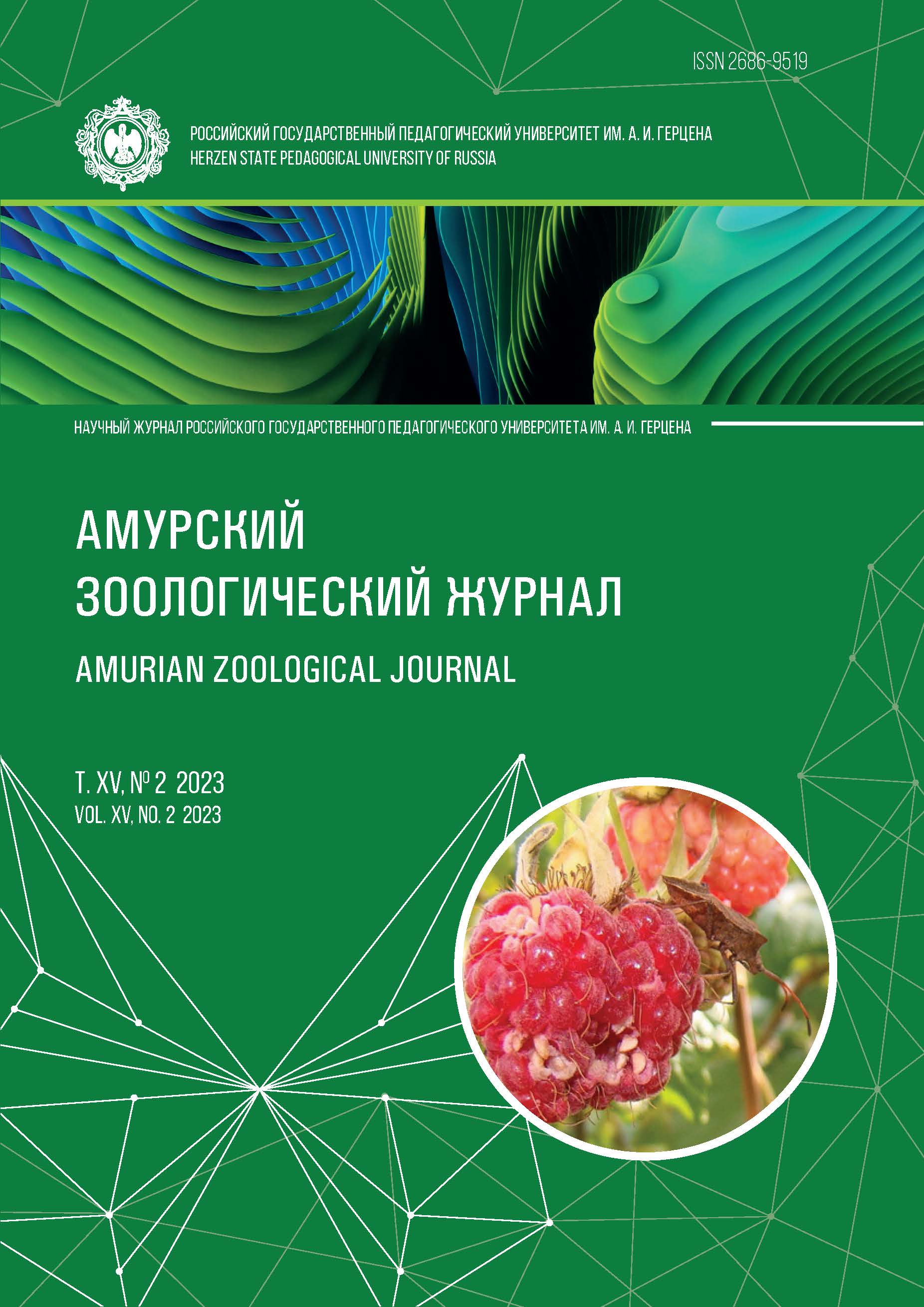New records of Aganainae (Lepidoptera: Erebidae) from Laos
DOI:
https://doi.org/10.33910/2686-9519-2023-15-2-222-225Keywords:
Euplocia membliaria, Asota javana, biodiversity, Indochina, Oriental RegionAbstract
The Aganainae fauna of Laos contains 10 species, which are known from the northern part of the country (north of Vientiane). In this article, we report on the first records of two species from Laos: Euplocia membliaria (Cramer, 1780) (Champasak province, 14°36'26"N, 105°53'55"E) and Asota javana (Cramer, 1780) (Attapu province, 14°44'08"N, 107°29'17"E). Additionally, we present new data on the distribution of eight species of Aganainae in three southern provinces of Laos: Champasak, Sekong, and Attapu. The updated list of the Aganainae fauna of Laos contains 12 species.
References
Bayarsaikhan, U., Na, S-M., Bae, Y-S. (2016) Review of the subfamily Aganainae (Lepidoptera, Erebidae) from Cambodia. Journal of Asia-Pacific Biodiversity, vol. 9, pp. 219–229. (In English)
Kononenko, V. S., Pinratana, A. (2005) Moths of Thailand. Vol. 3. Pt. 1. Noctuidae. An illustrated Catalogue of the Noctuidae (Insecta, Lepidoptera) in Thailand. Bangkok: Brothers of St. Gabriel in Thailand Publ., 261 p. (In English)
Spitsyn, V. M., Bolotov, N. I. (2020) Checklist of the subfamily Aganainae (Lepidoptera: Erebidae) from Laos with new records from adjacent countries. Far Eastern Entomologist, vol. 417, pp. 8–16. https://doi.org/10.25221/fee.417.2 (In English)
Downloads
Published
Issue
Section
License
Copyright (c) 2023 Vitaly M. Spitsyn

This work is licensed under a Creative Commons Attribution-NonCommercial 4.0 International License.
The work is provided under the terms of the Public Offer and of Creative Commons public license Creative Commons Attribution 4.0 International (CC BY 4.0).
This license permits an unlimited number of users to copy and redistribute the material in any medium or format, and to remix, transform, and build upon the material for any purpose, including commercial use.
This license retains copyright for the authors but allows others to freely distribute, use, and adapt the work, on the mandatory condition that appropriate credit is given. Users must provide a correct link to the original publication in our journal, cite the authors' names, and indicate if any changes were made.
Copyright remains with the authors. The CC BY 4.0 license does not transfer rights to third parties but rather grants users prior permission for use, provided the attribution condition is met. Any use of the work will be governed by the terms of this license.







